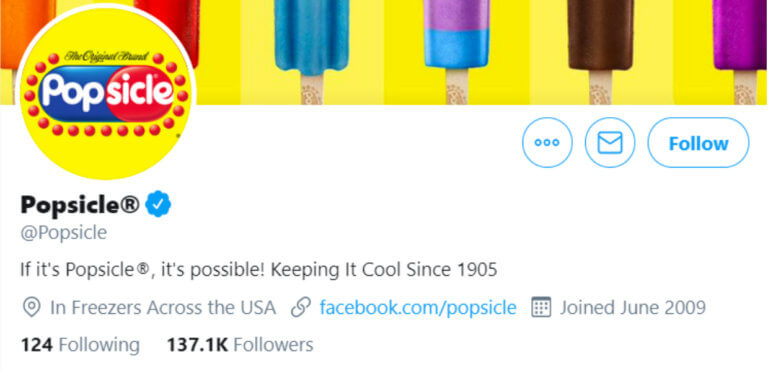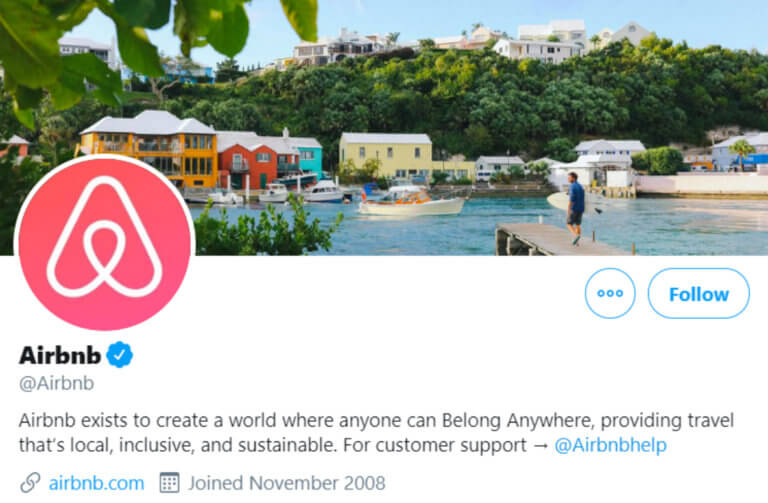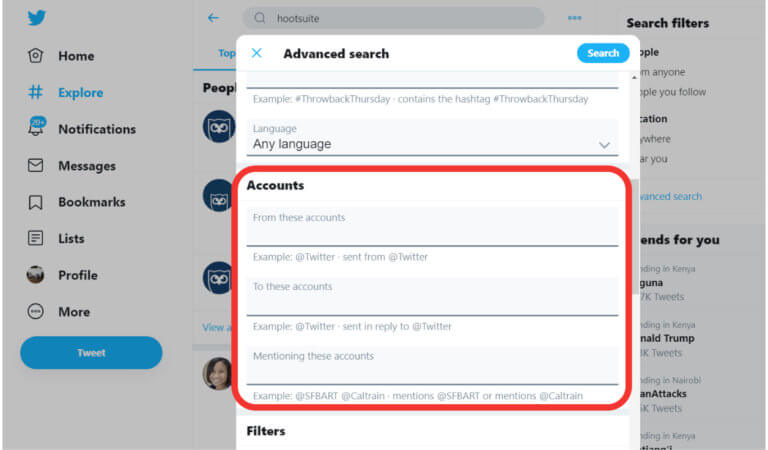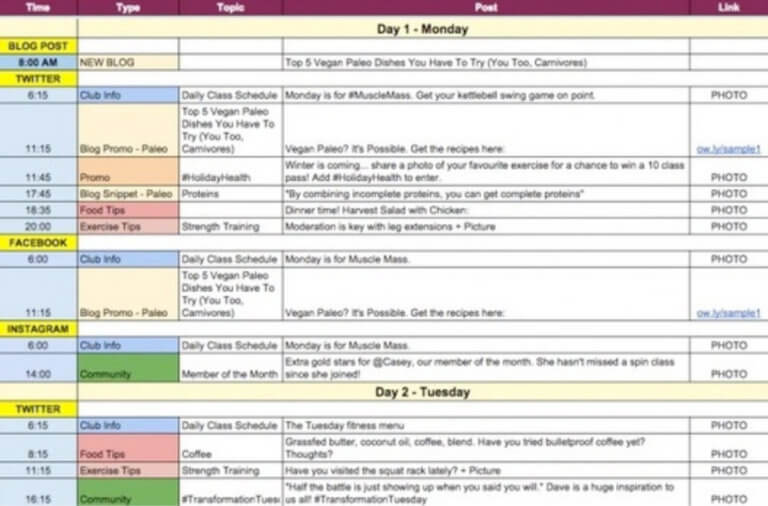How To Launch a Killer Twitter Campaign

A Successful, Killer Twitter campaign is your springboard to success.
But without a clear plan, you will be running around like a headless chicken, tweeting content with no idea whether it is bringing any value to your company.
Twitter is very different from other social platforms because of its format and speed. You can’t use the same approach as you would for a Facebook or Instagram campaign.
Get it wrong and you risk a roasting by numerous Twitter trolls who are merciless with newbies. Your company’s reputation certainly doesn’t need that kind of public humiliation.
Get it right and your brand could turn into a celebrity with a massive, loyal following.
Here’s what to do to craft a successful Twitter campaign:
1. Customize your Twitter profile
Before you launch your Twitter campaign, you need to revamp your profile.
Chances are, you created the company account simply because everyone was on Twitter and you thought you needed to jump on the bandwagon.
Since then, you’ve realized the value pro marketers are generating from this popular network.
Your profile is one of the first things people see, whether they’re checking they’ve got the right company or just because it’s right there at the top of your Twitter page.
A strategically crafted Twitter profile will help you build trust with your audience and gives customers a quick and easy avenue to reach out to you with questions and feedback.
It’s also the first touch-point for your campaign.
Optimize your profile so that your brand and your message stand out. When someone looks at your profile, you want them to immediately know who you are and what you’re offering.
Your bio
A Twitter bio is a short synopsis (160 characters) of what your business is all about. It’s like your elevator pitch: concise, direct, and impactful.
The trick to nailing your bio is to not overthink it. Write something that sums up your company – not just a mission or description, but your brand attitude. That’s what really matters.
Don’t just tell them what you do. Craft your bio to show them who you are, how you think.
Do this in a few short, sweet sentences.
Remember to keep it focused on your current goals. Your bio should immediately attract people who fit within your target audience and promote your Twitter campaign.
Here’s an example of a really good bio:

Your Twitter handle
This is your username and should contain your company name so that people can easily find and identify you on Twitter.
If you feel your current handle doesn’t do justice to your company, change it. However, if you already have a huge following, it’s advisable to leave your handle as it is.
You don’t want loyal readers thinking they’ve got the wrong page because of a name change.
Your header
Update your header with an eye-catching image that sums up who you are. Better still, use a campaign-specific graphic once you’re ready to roll.
Profile picture
Your profile picture should be your logo because this is what you want people to recognize and associate with your brand. Don’t use a face unless you’re an individual-based company.
Website URL
Add your general website URL beneath your bio for a chance to drive traffic to your website.
Verify your account
Verify your account so that people know it’s the official and authentic one.
A verified account gives you credibility. That tiny blue tick makes people trust your content—and your brand.
Sometimes the Twitter verification program goes on hold. If this is the case, all you can do is wait until the platform starts taking new requests.
Keep checking, but don’t stop tweeting while you wait.
Here’s a good example of a well-optimized Twitter account:

Do you need help with your branding? Get in touch with us now.
2. Define success and set goals
Now that your profile is complete and optimized, the next question is what you hope to achieve with this Twitter campaign.
A successful campaign should have SMART goals. Without goals, how will you know if your campaign was a success?
A few good Twitter campaign goals include:
Increase your Twitter followers
Create/increase brand awareness
Build brand loyalty
Generate more website traffic
Increase conversions
Increase app installs and re-engagement
Increase video views
3. Identify the right target audience for your campaign
Just as your product/service is not for everyone, not everyone on Twitter is your customer. You should not try to market to the entire Twitter population.
The more targeted your campaign is, the higher your chance of success; targeted audiences are more likely to engage with your brand and eventually become customers.
As Kissmetrics aptly puts it, by targeting the right audience you get active followers who have the potential to share your content and get you more attention.
Your campaign goals will determine who your target audience is. For instance, if your goal is to generate leads, there’s no point in targeting existing customers.
However, if you want to increase customer loyalty, then you should definitely aim for your current customer base.
4. Research the competition
Know your competition. What are they doing that you’re not? What is working for them? What is not?
Figuring out what works for other people and playing into it can help you launch a killer Twitter campaign.
A Twitter competitive analysis allows you to better understand the brands that you’re going head-to-head with. Remember, you’re not operating in a vacuum.
You have competitors and you want to beat them. Get ahead of the pack and stay there.
A Twitter competitor analysis will help you:
Identify who your competitors are on Twitter
Know what they’re doing now
Know what they did before
Know how well their Twitter marketing campaign is working for them
Know how they threaten your business
Identify gaps in your own strategy
There are many good tools that you can use to conduct a quick competitor analysis, such as Buzzsumo, Hootsuite Streams, Brandwatch, or Twitter Advanced Search.

Advanced search on Twitter
5. Give your Twitter account a voice
To stand out on Twitter, your Twitter account needs a well-defined brand voice.
A consistent voice gives your company a human side. People want to engage with people, not brands. So you want your choice of voice to be as human and approachable as possible.
The voice has to appeal to your target audience and (ideally) grab their attention, whether that’s with expertise, humor, empathy, or something else.
You want people to see your brand all over your Twitter content and be comfortable with the image it creates.
So be careful to choose a voice that you want to be associated with your brand in the long term.
Your competitor research may affect the voice you choose – or not.
Do you want to stand out by doing something completely different from what the others are doing or do you want to play the game alongside them?
Your voice must extend into every campaign you come up with. Don’t change voice with every campaign.
People very quickly learn to expect what they’re used to and you will get a subconscious negative reaction to unexpected changes.
If you’re running multiple Twitter accounts – say for each of your products or regional stores.
Having the same brand voice will ensure that all your tweets from the various profiles remain smooth and consistent.
Your brand voice should be original, reinforce your company’s core values and personality, and convey your brand’s message.
6. Decide what content to share
Find out the kind of content that your target audience enjoys most.
Take a look at your blog. Which are the most popular blog posts?
How about your other social media platforms? Which content gets the most love in terms of traffic, engagement, and social sharing?
Cross-reference and figure out the content format(s) your audience prefers. Long-form articles, infographics, listicles, FAQs, how-to-videos?
The kind of content and formats to which your target audience responds best should inform the content you use for your Twitter campaign. Give them what they want.
That way, you can be confident that your content will strike a chord with your audience.
Use a social media editorial calendar to plan ahead, stay organized, and remain consistent throughout your Twitter campaign, especially if you have multiple accounts.Here is an example of a weekly social calendar:

7. Use images, videos, GIFs, and hashtags
Images, videos, GIFs, and hashtags will make your campaign content more interesting and interactive. For increased success, make them as unique to your campaign as possible.
Make sure that they fit your Twitter account’s voice and overall design approach so that you’re able to push your campaign goals.
Hashtags
Hashtags help get your content found and seen by as many people as possible. According to Twitter, brands that use hashtags get 50% more engagement than those that don’t.
Their success, however, depends on how you use them.
Don’t overuse hashtags as they make your content look spammy. Research shows that tweets with more than two hashtags receive 17% less engagement than those with only one or two.
The more hashtags you use, the less engagement you get.
Make sure that the hashtags you use to add context to your tweets. Here’s a good example:
Images
Images make tweets more noticeable and interactive. Tweets with images receive an average of 89% more likes or favourites than those that are just plain text.
Include relevant images in your tweets to encourage engagement and to make your campaign successful.
Your images should work smoothly with the overall voice. A brand like Lays or Popsicle uses bright, flashy images; a real estate company benefits from beautiful shots of beautiful homes.
A down-to-earth outdoorsy company wants mud, backpacks, and smiles on pics from a mobile.
Choose the wrong pictures and you create dissonance with your text and voice.
Videos
Videos on Twitter are another very effective way of increasing engagement. People actually love watching videos on Twitter especially on their mobile devices.
Twitter says that 90% of video views happen on mobile devices. That statistic means you must plan carefully.
Make sure your videos aren’t too long, are of high quality, and download fast, so mobile device users can fully enjoy your content.
GIFs
GIFs are the ultimate way to bring some humor to your Twitter campaign. Over 100 million GIFS were shared on Twitter in 2016.
GIFs are a lot smaller than video, so they can be used frequently. But there’s the risk of burnout if you use GIFs that are too popular – people get tired of seeing the same ones.
Find fresh GIFs that tie to your brand voice and which amplify your campaign.
Twitter’s integrated GIF search is a great place to start.
8. Consider Twitter Advertising
You can supplement your organic marketing efforts with paid advertising to achieve your campaign objectives.
For instance, if your goal is to boost engagement on Twitter or to convert followers into customers, you can use Twitter advertising to achieve this.
There are two ways to advertise on Twitter, both of which make your tweets more discoverable:
Promoted Tweets
This type of ad makes your tweets appear on Twitter search results and the streams of specific users.
Promoted Tweets are best when you have a targeted audience and you’re hoping to get them to take the desired action – for instance, to visit your website or custom landing page.
You select your desired target audience when setting up your ad campaign.
Twitter Ads
Twitter Ads are a great option when you want to grow your following or to create brand/product awareness.
You can set up different objectives for each Twitter Ad, including website conversions, app installs and video views.
9. Drive engagement
Use your website URL to drive brand engagement.
If your campaign goal is to drive traffic to your website then you have to include URLs on every campaign post.
When adding links to your posts use URL shorteners to save tweet space.
Popular choices are Bit.ly and Owl.ly. Stick to one shortener and don’t keep changing (people actually notice that sort of thing).
Better still, you can get a personalized URL shortener set up, like H&M’s hm.info or Pepsi’s pep.si.
Companies like Rebrandly can help you set up your own shortener if you lack the technical expertise.

If your goal is to build a following, then drive engagement by encouraging people to share your tweets.
10. Implement a reporting process
The last thing you need to make your Twitter campaign a success is to put a reporting process in place. All the hard work will be in vain if you cannot quantify what you have achieved.
Determine whether you need weekly, biweekly or monthly reports. Select the reporting tools that you will use.
Generate Twitter reports to find out how many leads and sales your campaign generated.
Reports will also give you a clear understanding of who followed/unfollowed you and how many retweets you received during the campaign period.
You’ll also get insights on your peak hours (when people shared your posts the most), to help you figure out when your audience is most likely to be online.
That’s a key piece of information for future campaigns.
Pay attention to what devices your audience uses, too. If most of your fans use mobile phones.
Trying to reach them during their commute or on weekends will be more beneficial than targeting work hours.
Twitter reports will also show you how your paid ads performed in comparison to your organic tweets. This way, you can see how much your ad dollars are expanding your reach.
There are a host of tools you can use to generate Twitter reports including Twitter Analytics and Hootsuite Analytics.
Final thoughts
Unlike most marketing platforms, things move pretty quickly on Twitter. Over 350,000 tweets were posted every minute in 2019.
So it’s frighteningly easy for your tweets to get lost in the noise. You have only a few moments to create an impact.
Your marketing campaign on Twitter must be unique and well thought out to stand out from the crowd and get ahead of the pack!
Main takeaways
Revamp your Twitter profile to make sure it aligns with your campaign
Create SMART goals
Be clear about who you want to target
Give your Twitter campaign a well-defined brand voice
Know your competition
Select the kind of content that your target audience enjoys most
Boost engagement from your tweets by using images, videos, GIFs, and hashtags
Supplement your organic marketing efforts with paid advertising
Drive engagement
Determine your reporting process
Need help creating an effective social media marketing strategy that will see your marketing campaign surpass its objectives? Talk to us today!

